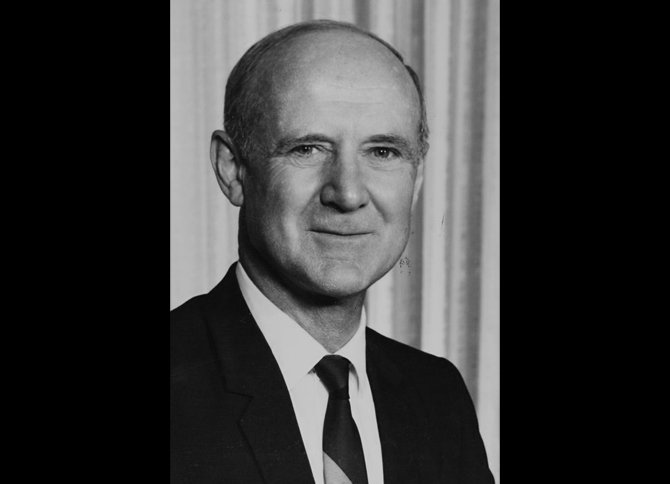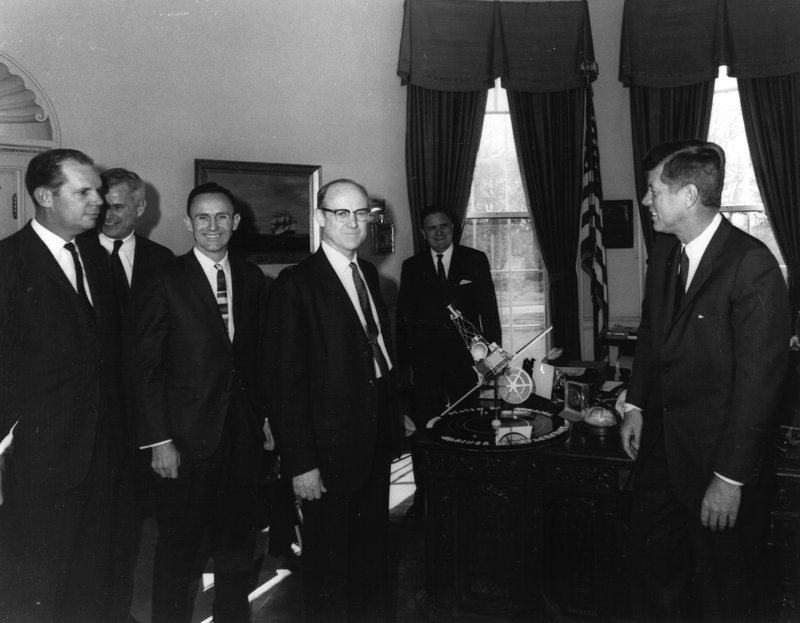New Zealand engineer and physicist, William Pickering, took the world to the planets and led the USA to pre-eminence in the 20th century space race.

William Pickering. Flickr Commons: San Diego Air and Space Museum Archive, catalogue no. 02-P-00253.
Dreams of the stars
Born in Wellington in 1910, William Pickering spent his primary school years with his grandparents in Havelock. He excelled at school, and at age 12 returned to Wellington to board at Wellington College. Here Pickering joined the radio club. He earned his radio operator certificate, improved the club's receivers and transmitters and made contact with other stations in New Zealand, Australia and the U.S.A. He also developed a growing interest in astronomy. After glimpsing the moon and planets for the first time through a school telescope his dream of reaching the planets was born.
Student days at Caltech
After high school, Pickering began an electrical engineering degree at Canterbury College (now University of Canterbury). At the end of his first year at Canterbury, his uncle, recently returned from California, told Pickering of a new university close to Pasadena named Caltech. He moved to the U.S.A with his uncle in 1929 and completed a Bachelor of Physics.
He then began postgraduate work but was unsure of which topic to focus on for his thesis. His mentor, Caltech president Robert Millikan, guided him toward cosmic rays. Through his fieldwork, failures, successes and innovative thinking, Pickering created a strong understanding of instrumentation which would be invaluable to him in the years ahead. Awarded a PhD for his work on cosmic rays, Pickering stayed at Caltech to teach and within ten years became a full professor.
As an undergraduate student Pickering met Muriel Bowler, the sister of one of his university friends. The couple married in December 1932. Their first child, Balfour, was born in 1939, and a daughter, Anne Elizabeth, in 1943.
Teaching at Caltech
During World War Two, Caltech delivered training courses for naval officers. Pickering taught electronics as well as electrical engineering, physics and mathematics. In 1943 the Guggenheim Aeronautical, the centre for aeronautical research at Caltech, was reorganised to become the now famous Jet Propulsion Laboratory (JPL). The laboratory designed and built guided missiles for the army. Pickering joined JPL part-time while continuing his work teaching the military alongside his regular students.
Following World War Two, the Cold War saw the need for guided missile technology continue. Pickering spent more time at JPL where he enjoyed significant authority and the varied technical challenges available. He kept one eye on the stars, knowing that his work, although currently of a military nature, was the first step in civilian flight to the stars.
Leading JPL
In mid-1954 the director of JPL resigned and Pickering was offered the job. It was a defining moment for Pickering. He began speaking publicly about topics such as radios and guidance systems and the future of space travel. That year he also took part in a symposium to discuss building an Earth satellite. Although a JPL-built satellite was not initially a priority for the government, the launch of the Russian satellites Sputnik I and II in 1957 prompted the government to give JPL the go-ahead. The successful launch of satellite, Explorer I, in January 1958 thrust Pickering into the public eye as he became the face of the space race. He gave talks across the country and around the world.
Pickering’s early years as head of JPL included many failures as the laboratory continued, in Pickering’s words, to ‘climb the learning curve’. Several Ranger craft were fired at the moon, aiming to crash into it, but only a few succeeded. However, missions to Venus and Mars were completed flawlessly. In 1962, the Mariner II spacecraft made a successful flyby of Venus, and in 1965 Mariner IV captured the first close-up pictures of Mars. In 1966, Ranger VII returned the first pictures of the surface of the moon, bringing manned missions to the moon one step closer.
One of the last major space projects of Pickering’s tenure was overseeing the Voyager craft construction.

Pickering presents a model of the Mariner spacecraft to President John F. Kennedy, 1963. Flickr: NASA on The Commons. Image no. P8698A
Retirement
Pickering retired from JPL in 1976, age 66. He continued to travel widely, giving lectures around the world. He made visits to Saudi Arabia where he helped to establish course curriculums and procedures for the newly charted university College of Petroleum and Minerals.
Pickering then established a small consultancy company which completed work for China among other countries.
In the early 1980s, Pickering began a new business venture as CEO of a company manufacturing compressed pellets of sawdust as a clean-burning, alternative fuel.
Muriel died in 1992. In 1994 Pickering married long-time family friend Inez Chapman.
Awards and honours
Pickering’s achievements were recognised with many awards and honours from the United States and around the world.
In 1976, President Ford awarded him the National Medal of Science, the United States’ highest honour for engineering excellence.
He received an honorary knighthood in 1975.
In 1993, he became the inaugural recipient of the Francois-Xavier Bagnoud Aerospace Prize, and the following year was awarded the Japan Prize, an international award for achievement in the field of science and technology.
Pickering returned to New Zealand one last time in 2003, visiting Wellington College, Havelock and Christchurch, where the University of Canterbury bestowed upon him an honorary doctorate. On his return to California he was notified of a new medal from the Royal Society of New Zealand to be called the Pickering Medal, awarded annually to an exceptionally gifted engineer. Later that same year he was made an honorary member of the Order of New Zealand, New Zealand’s highest civic honour.
Further Reading
Mudgway, Douglas J. William H. Pickering: America's deep space pioneer. Washington, DC: National Aeronautics and Space Administration, 2007.
